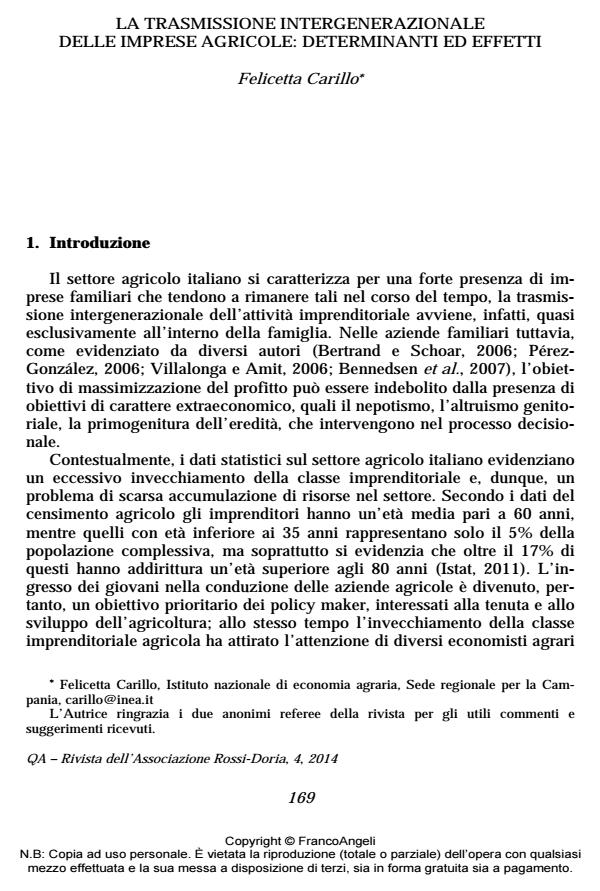La trasmissione intergenerazionale delle imprese agricole: determinanti ed effetti
Journal title QA Rivista dell’Associazione Rossi-Doria
Author/s Felicetta Carillo
Publishing Year 2015 Issue 2014/4
Language Italian Pages 31 P. 169-199 File size 191 KB
DOI 10.3280/QU2014-004008
DOI is like a bar code for intellectual property: to have more infomation
click here
Below, you can see the article first page
If you want to buy this article in PDF format, you can do it, following the instructions to buy download credits

FrancoAngeli is member of Publishers International Linking Association, Inc (PILA), a not-for-profit association which run the CrossRef service enabling links to and from online scholarly content.
Intergenerational Farm Transmission: Determinants and Effects Intergenerational farm transmission has been the object of a great many studies in Italy, which, however, have failed to clarify the difference between intra-family and extra-family farm transmission. To demonstrate the non-neutrality of this process, our econometric analysis shows: i) a negative relationship between the condition of the heir and the farm's performance; ii) a positive relationship between the manager’s level of education, young age and the economic results; iii) a negative relationship between the education of the farmer’s son and his presence on the farm. EconLit Classification: Q120, Q150, O130, D220
Keywords: Intergenerational transmission activities, Family farms, Farmer’s capability
Felicetta Carillo, La trasmissione intergenerazionale delle imprese agricole: determinanti ed effetti in "QA Rivista dell’Associazione Rossi-Doria" 4/2014, pp 169-199, DOI: 10.3280/QU2014-004008